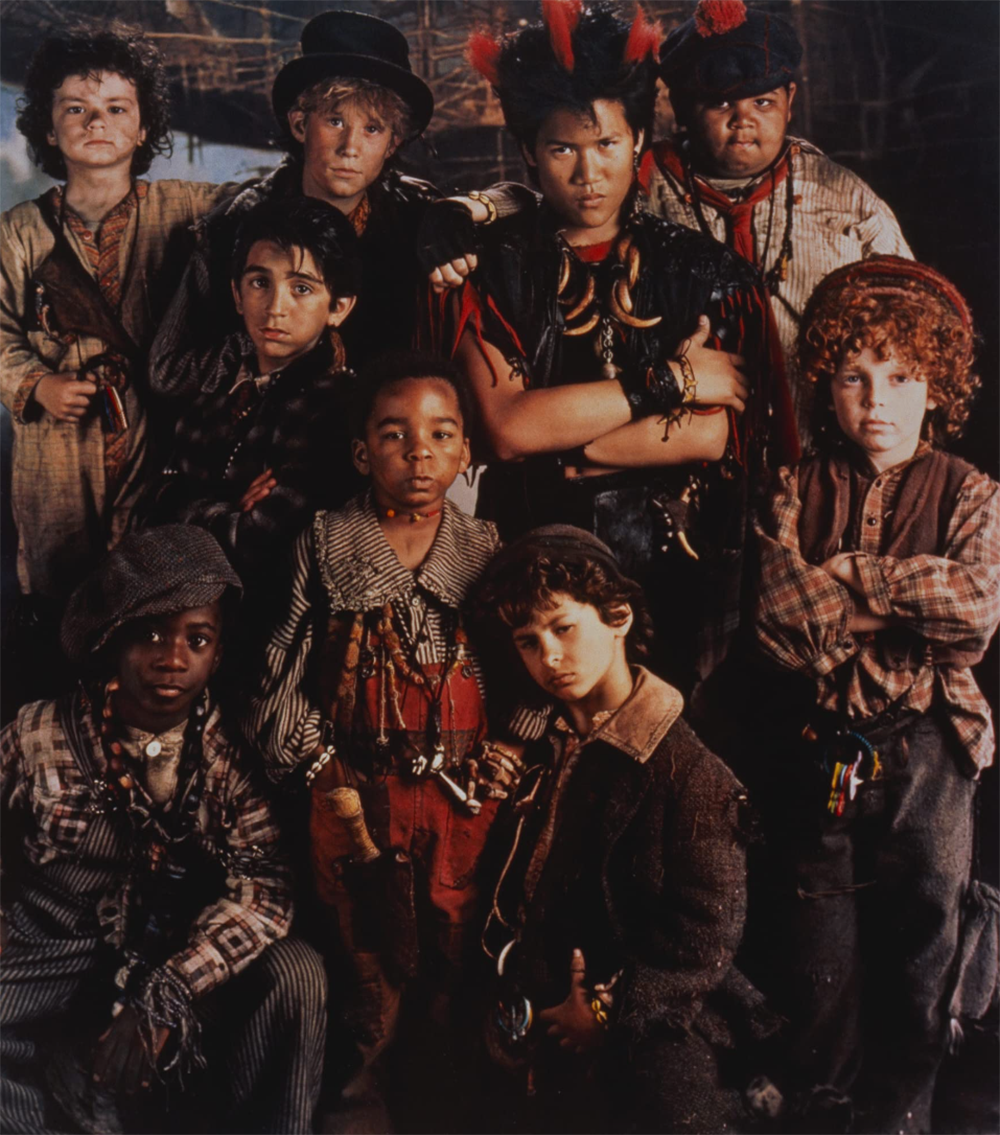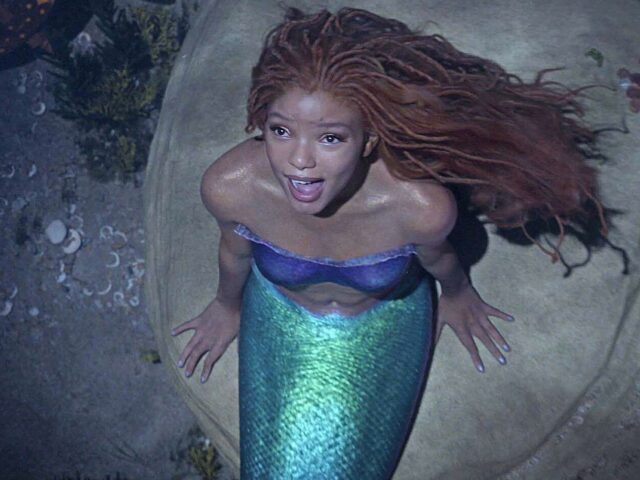Racism and colonialism are “built into the workings” of the Peter Pan story, according to a CNN opinion piece slamming the new Disney film despite its diverse cast and inclusion of girls in the “Lost Boys,” as it claimed switching to non-white actors “isn’t enough” to address its core issues.
The Friday CNN op-ed, titled “The problem with ‘Peter Pan’ that the new Disney+ movie doesn’t solve” and penned by Chicago-based writer Noah Berlatsky, begins by accusing the new film of trying to “sidestep the colonialism at the heart of ‘Peter Pan’ by employing less uniformly White casting than other remakes.”
“It’s a worthy effort, but racism, unfortunately, is harder to disarm than Captain Hook,” the author writes.
“Peter Pan was, and remains, popular because it combines ideas about childhood and still-beloved pulp colonialist tropes into an exciting, whimsical narrative,” writes @nberlat.https://t.co/p1SW8A2s2L
— CNN Opinion (@CNNOpinion) April 28, 2023
According to Berlatsky, the classic story of the fictional character “was, and remains, popular because it combines ideas about childhood and still-beloved pulp colonialist tropes into an exciting, whimsical narrative.”
“Children are (supposedly) carefree, creative and eager for new experiences. At the same time, in England and the West, colonies were seen as dangerous, exciting venues for adventures,” he adds, claiming the original author J.M. Barrie recognized “the people over there were often seen as childish and irresponsible, contrasting them with the staid norms of the imperial center.”
The message of Peter Pan, Berlatsky asserts, is that by traveling to the British colonies, one can “recapture lost time and lost youth.”
Though the message was “hugely appealing at the time,” he writes, over time “as the colonial implications have grown less and less comfortable, many creators have tried to salvage it.”
“But in every version, including the most recent, a Neverland without racism remains elusive,” he adds.
In reference to the 1924 screen version of the play-turned-novel, Berlatsky claims the Native Americans featured are depicted as “unabashed stereotypes.”
WATCH: Aren’t Dragons Supposed to BREATHE Fire?? Disneyland’s Dragon Goes Up in INFERNO:
“Tiger Lily, the Indian princess, is played by Anna May Wong, a Chinese American actress. Hollywood at the time apparently thought that all non-White people were interchangeable,” he writes.
However, he argues, the iconic 1953 animated film “was somehow even worse” than the “racist” 1924 version.
“The illustrators were able to distort the Native Americans’ appearance even more, turning them into grotesque caricatures. They are onscreen for much longer, and there’s a profusion of slurs,” he writes.
“The children parody the Indians, who are themselves a parodic imitation of children playing at racist imperial imaginings,” he adds.
Berlatsky describes the depictions as a “painful illustration of the way that non-White people are seen as infants and their land as a playground for White people’s fantasies and wars.”
While noting that Barrie “delights in the adorable innocence of children, and in their capacity for imagination and play,” Berlatsky claims “their innocence is illustrated in part by creating a racism-filled analogy with supposedly less-developed communities.”
“[A]dulthood means growing into responsible Britishness,” he adds.
He then turns to Steven Spielberg’s adaptation Hook, released in 1991, claiming it “tries to add people of color in other ways — but runs into racist stereotypes when it does.”
As an example, Berlatsky highlights how Filipino-American actor Dante Basco, playing as Rufio, is “first made to kneel in deference to the White adult Peter and is then murdered to give Peter motivation to fight Hook with renewed fierceness.”
“It’s a speedrun of racist moviemaking tropes,” he writes.

Dante Basco, Jasen Fisher, Bogdan Georghe, Raushan Hammond, James Madio, Isaiah Robinson, Ahmad Stoner, Thomas Tulak, and Alex Zuckerman in Hook (1991). (Sony Pictures Home Entertainment)
While recent adaptations “have tried to add even more non-White actors,” with the current Disney film featuring a mixed-race actor playing Peter, a black actress playing Tinkerbell, and an indigenous actress playing Tiger Lily, Berlatsky insists “the colonial framework is still in force.”
“Both [the 2020] ‘Wendy’ and [Disney’s] ‘Peter Pan and Wendy’ make their non-White Peters less heroic, less competent and more morally compromised,” he charges.
Though the intention is to “elevate Wendy as the hero, giving her more agency and adventuresomeness than the sexist prototype in Barrie’s writing,” Berlatsky still laments that by “centering (White) Wendy, the Peters of color are pushed toward stereotype.”
“They’re not the heroes of their own stories but childlike colonized people whom the White protagonist has to save, physically and spiritually,” he writes. “The films both become tales of White women going on an adventure to educate and elevate non-White people (in the Disney+ film, Wendy ends up flying better than Peter in the third act).”
The problem, Berlatsky states, is the narrative’s association of Peter with the colonies.
“He’s a Tarzan/Natty Bumppo/mighty whitey character who leaves Europe (running away from his mother to avoid growing up), learns the ways of non-White people and becomes the greatest warrior/hero/leader among them,” he writes.
And while casting Peter as a person of color “flattens out some of the most offensive connotations,” Berlatsky maintains that it still “retains the basic imperial dynamics.”
“White people like the Darlings adventure in the colonies because the colonies are where childlike people such as Peter live and have childlike adventures,” he writes.
“An adaptation that wanted to escape from that narrative probably needs to give a person of color the role not of Peter Pan, but of Wendy,” he adds.
According to Berlatsky, Wendy, who is “less of a symbol and more of a person,” is supposed to “change and grow up.”
While she is “how the story recognizes that childhood isn’t an eternal state which exists over there, but a temporary thing,” if she’s “always White, that reserves development, and adulthood, for White people.”
“White Wendy is a White person setting aside her whiteness briefly to stay young and free. A POC Wendy looking for freedom in a less White world, though, means something potentially quite different,” he adds.
Stating that British history and creative works are “soaked in colonialism,” Berlatsky describes Peter Pan as “hardly the only one unable to overcome this past just by casting more diverse actors.”
Though the latest James Bond film “finally gave us a Black female 007,” Berlatsky still moaned that it had fallen prey to the same errors, as the female character “(like Rufio) quickly defers to the white male version, essentially cosigning his authenticity and value.”
Charging that “racism and colonialism are built into the workings of these stories,” the author argues that “switching in different actors isn’t enough to address that.”
While describing Barrie’s 1911 novel as “a lot of fun in a lot of ways,” Berlatsky reiterates that it’s also “extremely racist in its presuppositions, its morals and its ideas about who is and is not childish.”
“If you want to keep telling this story, and don’t want your retellings to be racist and colonialist, you have to put some work in and take some chances,” he writes.
He concludes by expressing appreciation for the fact that recent adaptations, including the new Disney one, are “trying,” yet he still maintains Peter Pan “was created in important ways out of racism, and no one in film has yet figured out how to make him fly free of it.”
In response, the CNN piece faced some criticisms.
“When kids read Peter Pan or watched movies, none thought about colonialism or others being ‘less than,’” wrote one Twitter user. “It is only wokesters like u whose world is nothing without crying racism all the time.”
“Every culture tried to conquer other cultures. But false outrage is only 4 the West,” the user added.
“These race-grifters will NEVER be happy because they aren’t honest or sincere,” another user wrote. “They feed off the chaos their inextinguishable grievances sows and offer no solutions as they lack the imagination to create anything people care about in the first place.”
“If your primary purpose in watching or reading Peter Pan is supposed ‘colonialism’ try going outside and touching grass,” wrote another Twitter user. “While you’re at it, take your manufactured indignation and stick it in your ear.”
Last week, Disney released the new, live-action Peter Pan & Wendy featuring a diverse cast and girls as members of the Lost Boys, which marked a revisionist departure from J.M. Barrie’s original novel.
It features non-white actors playing the roles of Peter Pan and Tinkerbell, though Captain Hook, played by Jude Law, is still white.
This year, return to Neverland. ✨ Watch the trailer for #PeterPanAndWendy and stream the movie event April 28 only on @DisneyPlus. pic.twitter.com/3DlRqtiyn0
— Disney (@Disney) February 28, 2023
The film, directed by indie filmmaker David Lowery, has been described as “woke” and “multicultural,” since its trailer first debuted.
Yet another woke-swapping remake of a Disney classic:
Peter Pan is Indian
Tinker Bell is Black
The Lost Boys are girls
Captain Hook is still White pic.twitter.com/m7wvq1U36n— End Wokeness (@EndWokeness) March 2, 2023
Disney, seeing profits plummet and its stock tumble 44 percent coming off a rough 2022, is still reeling from a number of woke flops, including the animated environmental movie Strange World, which featured a gay teen protagonist, and Pixar’s Toy Story spin-off movie Lightyear, which featured a lesbian kiss.
The matter comes as more and more attempts at pushing “woke” ideology are continuously deemed insufficient.
Follow Joshua Klein on Twitter @JoshuaKlein.

COMMENTS
Please let us know if you're having issues with commenting.